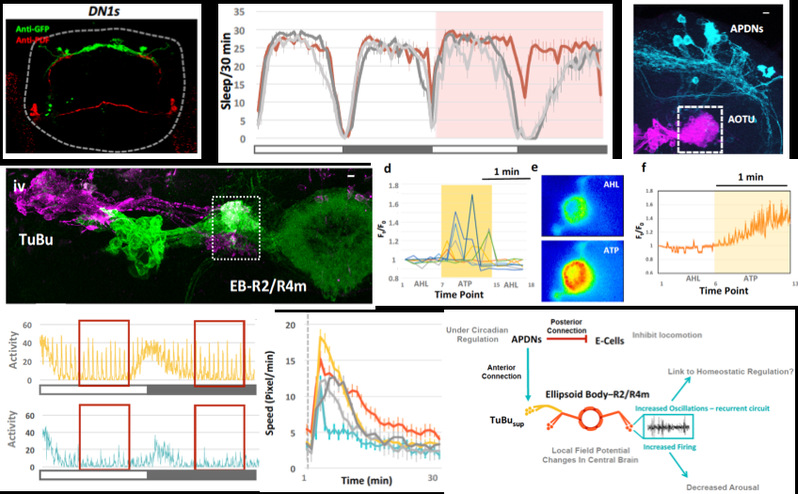Sleeping fruit flies help researchers decipher sleep
GUO Fang, a researcher in the Department of Neuroscience of School of Medicine, identifies a neural circuit of Drosophila linking circadian neuron APDN1 with the sleep center ellipsoid body EB-R2. This study provides crucial clues to understanding the connection mechanism between the circadian clock and the sleep regulation.
Researchers forecast that in the future, light sleepers may cure insomnia by taking certain medicine so as to have better-quality sleep. It is also surmised that with more in-depth research into the mechanism for slow-wave sleep or deep sleep, human beings don’t need to have adequate sleep for more than 8 hours. To be more specific, they may be capable of replenishing energy within a short time by adjusting slow-wave sleep. It may be possible for people to remain energetic for a whole day with 2-hour sleep.

The study reveals that the Drosophila circadian circuit contains distinct groups of interacting neurons that give rise to diurnal sleep-wake patterns. Among them, a small cluster of dorsal neurons (APDNs) have a unique projection pattern. The posterior axons inhibit the locomotion-promoting circadian neuron LNds. The anterior-projecting axons “exit” the circadian circuitry and communicate with the homeostatic sleep center in higher brain regions to regulate sleep and sleep-wake arousal. These APDNs connect to a small, discrete subset of tubercular-bulbar neurons, which are connected in turn to specific sleep-centric ellipsoid body (EB)-ring neurons of the central complex. Remarkably, activation of the APDNs produces sleep-like oscillations in the EB and affects arousal. The behavior data indicate that this APDN-TuBu-EB circuit temporally regulates sleep-wake arousal in addition to the previously defined role of the TuBu-EB circuit in vision, navigation, and attention.

This study is hailed as state-of-the-art and highly pioneering. “It remains enigmatic how the ‘firewall’ of sleep prevents the input of external information and what the medium for signal transmission in the neural circuit is. Moreover, the specific interior mechanism also needs to be determined,” says GUO Fang.
The relevant finding is published in a research paper entitled “A Circadian Output Circuit Controls Sleep-Wake Arousal in Drosophila” in Neuron. Prof. Michael Rosbash from Brandeis University, a 2017 Nobel laureate in Physiology or Medicine, is also the corresponding author of this paper.